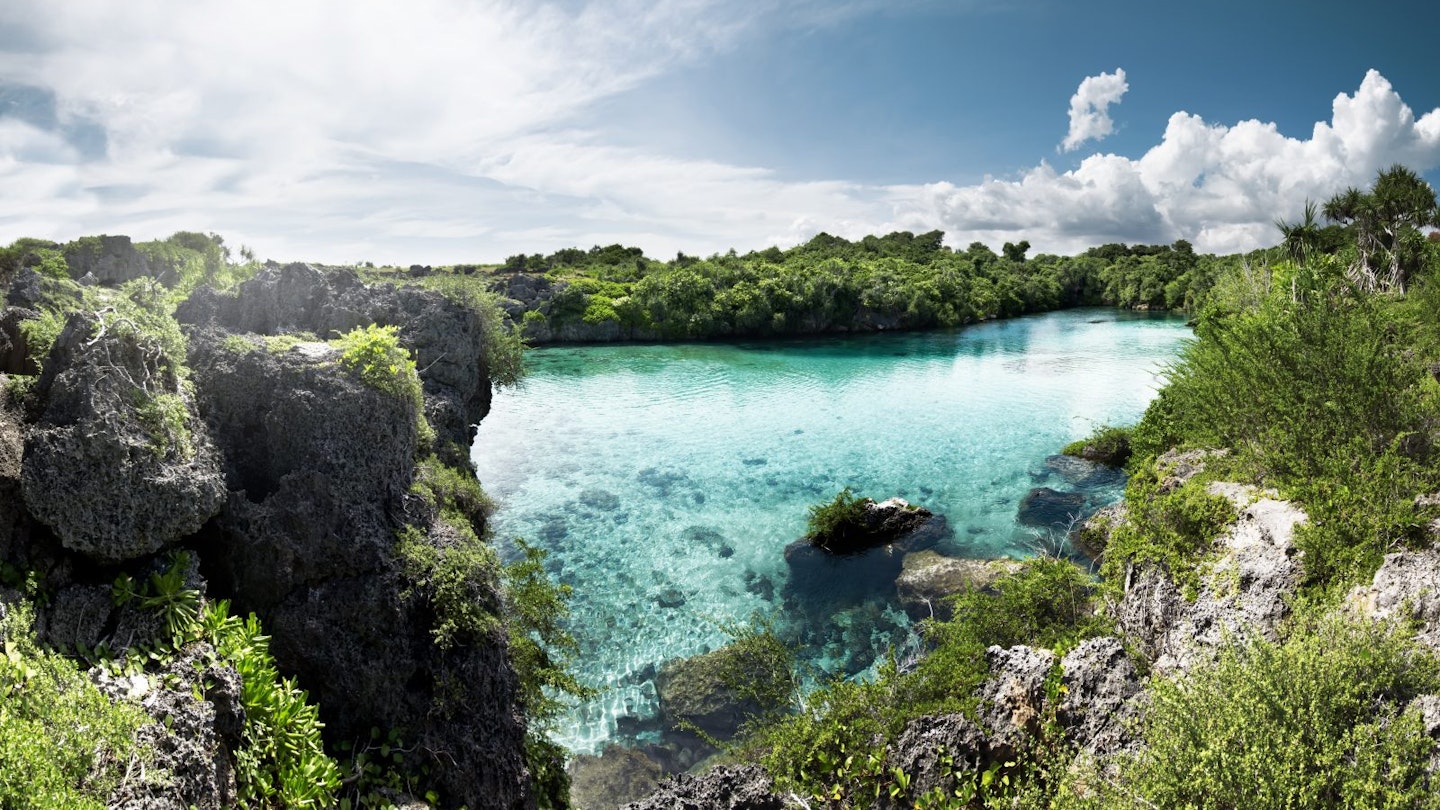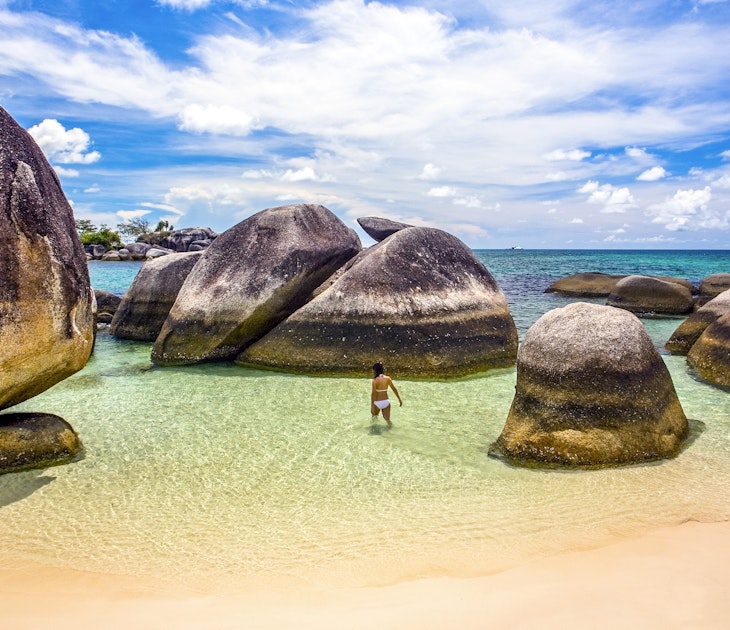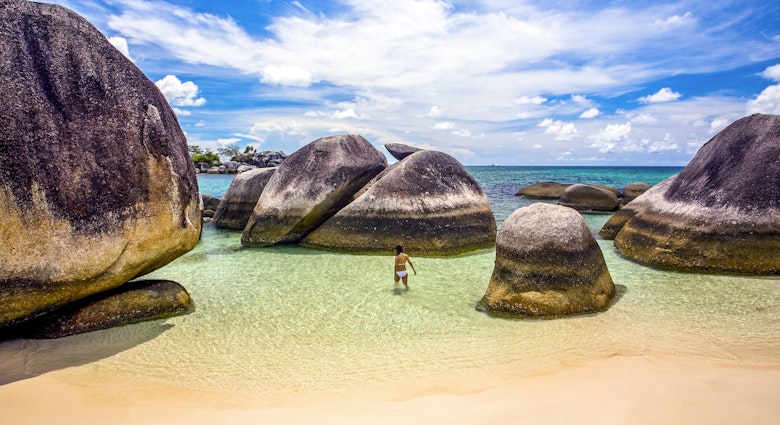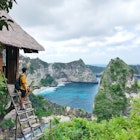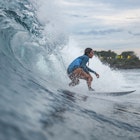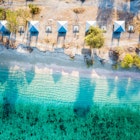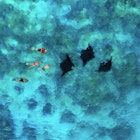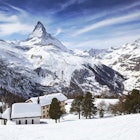Just a 50-minute flight from Bali’s sleek beach clubs, juice bars and yoga studios, Sumba provides a satisfying contrast. An island of raw, natural beauty where an ancient animist religion still thrives, Sumba is twice Bali’s size but receives a mere sliver of its tourism. From empty beaches worthy of glossy magazine covers and vibrant spear-throwing festivals to world-class surfing and a sense of remoteness that’s increasingly hard to find, these are just some of the reasons you should consider a visit.

Sublime shores
Wandering onto any of Sumba’s beaches, you’ll immediately wonder where everyone else is. Strips of floury white sand and tropical, topaz-blue water are backed by great craggy cliffs and lush vegetation. Having these beaches entirely to yourself is a genuine treat.
At the end of a long series of pot-holed dirt roads in the south-west Kodi district, you’ll find Weekuri Lagoon, a salt-water tidal lagoon surrounded by thickets of trees and greenery. The water is so clear, it takes a second glance to see there’s anything there at all. Nearby Mandorak Beach is a little cove with ice-white sand and dazzling water flanked by volcanic rocks. Bawana Beach is perhaps the most famous, with its giant stone arch that reaches from the sheer cliffs over the beach to the sea.
It is rare to see any other tourists, though you may meet the odd fisher or – at the most popular places – locals selling coconuts, ikat fabric or jewellery. At many beaches and other attractions, it’s common to be charged between R20,000 and R50,000 (£1 and £2.50) to enter. Note that as Western tourists are still few, the presence of a female in swimwear may result in some curious spectators here and there.

Ancient culture and festivals
One of the biggest draws of Sumba is its culture and marapu religion, an ancient animist belief in ancestral spirits, which is practised alongside mainstream religions (mainly Christianity). Giant stone tombs take pride of place outside each home and costly animal sacrifices to honour the dead are routine. Ancestral spirits are said to reside in the tall conical thatched roofs you’ll see throughout the island, with the tallest being those of tourist stop Ratenggaro Village in Kodi. The higher the roof, the closer the residents are to god.
Most Sumbanese people are farmers or fishers. Driving through the island, you’ll get glimpses of rural life: as you whizz past fields of maize and cassava, look out for children washing their buffalo in the river, and horses, a status symbol, being ridden along the roadside.
There are many festivals throughout the year, but the most popular is Pasola. These horseback spear-fighting festivals are held in western Sumba during February and March. A once deadly tournament between clans (the idea is that blood must be spilled to appease the gods for a good harvest), Pasola is now largely symbolic and the wooden spears are blunted. Bareback horse riders, cigarettes hanging from their lips, gallop around the field on steeds dressed in brightly coloured ribbons. The crowd goes wild when one of their spears hits an opponent, the women letting out deafening ululations.
Tourists are welcome at Pasola festivals, which still hold a high level of importance in Sumba. There is a police presence to deter any booze-fuelled brawling later in the day. Be aware that animals, usually pigs or chickens, are sacrificed as part of the rituals. As this takes place in the villages before and after the festival, it’s not something you will see unless you want to witness the whole ceremonial process, which also involves a dawn walk along the beach looking for the symbolic nyale worms that signal the start of Pasola.

Off-grid beach huts and one of the world’s best resorts
If you have heard of Sumba, there’s a big chance it’s because of Nihi Sumba (previously Nihiwatu), an award-winning resort regularly featured in luxury travel magazines. With rates that start at £985 per night, it’s at the top-end of the market. Other accommodation options are a little limited and not as budget-friendly as neighbouring islands, but many of the simple beach huts that pepper the shores are comfortable, charming bases from which to explore the island.
On the north-west coast, Oro Beach Houses is a collection of six, round, colourful, thatched-roofed huts scattered through a garden. Moments away, the beach is more or less your own. There’s virtually no wi-fi in Sumba and very little mobile signal, so embrace it and switch off. Hang out on your patio with a book and dine on delicious fresh fish, rice and vegetables prepared in the main house. A short distance up the coast, Mario Hotel has a pool – a rare amenity in Sumba.
Through a local guide, you can stay in traditional villages across the island – a great way to meet people and learn about Sumbanese culture. Bring a mosquito net, as malaria and dengue fever are prevalent.

Surfing sans the crowd
Amongst surfers, Sumba is no secret. In 2002, The Surfer’s Journal published a big story about Nihiwatu – at that time, simple beach cottages for die-hard surfers – and since then, the resort’s famous wave, Occy’s Left, has attracted pros and enthusiasts from around the world.
Of course, this isn’t the only great wave on the island and there is a handful of affordable, basic surf camps you can stay in along the south Indian Ocean coast. Experienced surfers can try out Miller’s Right on the gloriously picturesque Tarimbang Beach. Kerewe is 500 metres long, rolling in by the Sumba Surf Camp. The appeal is not just the epic waves – which are generally not suitable for beginners – but the isolation and consequent lack of crowds. The dry season between April and October tends to be the best time for surfing.
Getting around
You can easily hire a scooter or bike, though be aware that many roads are not in good condition and directions can be difficult to gather. Ojeks (motorcycle taxis) are available, but you may have to get off and walk in some parts. For the most comfortable experience, hire a car and driver.
A local guide can overcome language barriers and provide insight to the island and its culture. Tour Sumba can connect you with a local guide. Yuliana Leda Tara (yuli.sumba@gmail.com) helps arrange Pasola visits, including village stays before the festival.
Make sure you're ready for anything with travel insurance from our trusted partners.
https://shop.lonelyplanet.com/products/indonesia-travel-guide-11
